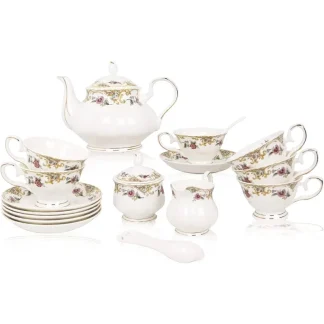British Teapots: A Timeless Tradition of Elegance
The British teapot is a symbol of hospitality, tradition, and the quintessential tea culture that has long been a part of life. From afternoon tea to daily rituals, these items hold a special place in society, representing both elegance and function. The tradition of using these items dates back centuries, with potteries and designs becoming iconic around the world. Whether you prefer the classic look of bone china or the rustic charm of ceramic, these products bring an air of refinement and history to any tea-drinking experience.
The Role of the Teapot in British Tea Culture
Tea is an essential part of culture, with its origins tracing back to the early 17th century. The tea tradition evolved into a formal practice known as "afternoon tea," introduced by Anna, the Duchess of Bedford, in the 1840s. At the heart of this tradition is these products, the centerpiece of tea service. These products are often crafted with attention to both form and function, reflecting the importance of tea in daily life.
From the Victorian era to modern times, British teapots have become a symbol of gracious living, where tea is not just a beverage but a social event. These products are synonymous with relaxation and conversation, whether enjoyed in a cozy kitchen or during a formal tea party. Tea sets often include matching cups, saucers, and a milk jug, all designed to create a seamless and elegant tea experience.
The Evolution of British Teapots
These options have evolved significantly over the centuries, with different materials, shapes, and styles emerging in response to changing tastes and technological advancements. Early products in Britain were made from imported Chinese porcelain, but by the 18th century, Potteries began producing their own distinctive designs. Some of the most famous pottery brands, including Wedgwood, Royal Doulton, and Spode, have become renowned for their product collections.
The introduction of bone china by Josiah Spode in the late 18th century revolutionized British teapot production. Bone china, a mix of fine china clay, bone ash, and stone, offered a lightweight yet durable material that could be molded into delicate and intricate designs. These items made from bone china became highly prized for their translucency, elegance, and ability to retain heat, making them perfect for tea service.
Iconic British Teapot Designs
These products are known for their timeless designs, which range from the traditional to the whimsical. Some of the most iconic designs include:
- Victorian Teapots: Victorian-era teapots are characterized by their ornate details, floral patterns, and rich glazes. These items often featured gold accents, intricate handles, and a large, round shape that could serve multiple guests at once.
- Blue Willow Teapots: The Blue Willow pattern, with its Chinese-inspired blue and white design, is one of the most recognizable product styles. First produced in the 18th century, it remains a popular choice for collectors and tea lovers alike.
- Novelty Teapots: British potters are famous for creating quirky, these items that reflect the sense of humor. From teapots shaped like cottages to those resembling animals or famous landmarks, these fun designs bring a playful element to tea time.
- Art Deco Teapots: In the 1920s and 1930s, these products became popular for their geometric shapes and bold colors. These options represented the modernity of the time, with sleek lines and innovative designs that were a departure from traditional forms.
- Bone China Teapots: Elegant and refined, bone china teapots are the epitome of British tea service. With their fine craftsmanship and beautiful hand-painted designs, these pieces are a staple in both everyday use and formal tea settings.
Why Choose a British Teapot?
These options are more than just a functional item; it is a piece of history and craftsmanship that elevates the tea-drinking experience. Here are some reasons why it remain a popular choice for tea lovers:
- Elegant Design: British teapots are known for their classic and timeless designs, making them perfect for both traditional and modern tea settings. Whether it’s a floral Victorian pattern or a minimalist bone china design, these items bring elegance to any table.
- Heritage and Craftsmanship: These items are made by some of the oldest and most respected pottery houses in the world. Brands like Royal Albert, Wedgwood, and Burleigh are synonymous with fine teaware and craftsmanship.
- Heat Retention: British teapots, particularly those made from bone china, are excellent at retaining heat, ensuring that your tea stays warm for longer periods.
- Durability: Made from high-quality materials, these pieces are built to last. Bone china, stoneware, and ceramic pieces are durable and designed to withstand daily use.
- Collectible Appeal: Many British teapots are highly collectible, with limited-edition designs and vintage pieces commanding significant value. Owning these pieces can be both a functional and decorative investment.
The Art of Brewing Tea in a British Teapot
Brewing tea in these options are an art form in itself. Here’s a simple guide to making the perfect pot of tea the way:
- Warm the Teapot: Before adding tea leaves, pour a small amount of hot water into the teapot to warm it. This helps maintain the tea’s temperature during brewing.
- Measure the Tea: Use loose-leaf tea for the best flavor. A good rule of thumb is to add one teaspoon of tea per cup, plus one for the pot.
- Add Boiling Water: Once the teapot is warm, pour freshly boiled water over the tea leaves. Allow the tea to steep for 3-5 minutes, depending on the type of tea.
- Stir and Serve: Give the tea a gentle stir before serving. Traditionally, tea is served with a splash of milk, but lemon or sugar may also be added to taste.
Caring for Your British Teapot
To keep your British teapot looking beautiful and performing well, it’s important to care for it properly. Here are a few tips for maintaining these items:
- Hand Wash with Care: These products, especially those made from bone china, should be washed by hand with warm water and mild detergent. Avoid abrasive sponges that can scratch delicate surfaces.
- Remove Stains Naturally: Tea stains can sometimes form inside the teapot. To remove these, use a paste made from baking soda and water or soak these pieces in a vinegar and water solution.
- Store Safely: If you’re not using these items regularly, store it in a safe place where it won’t be knocked or chipped. Keep the lid separate to avoid breakage.
Collecting British Teapots
For many tea lovers and collectors, These products are highly sought-after items. Collecting vintage and limited-edition products can be a rewarding hobby, as many pieces increase in value over time. Some collectors focus on specific brands like Royal Albert or patterns like Blue Willow, while others seek out unique novelty pieces that reflect history and culture. No matter your preference, collecting these pieces are a way to celebrate the artistry and tradition of tea drinking.
Conclusion
These collections embody the elegance, tradition, and craftsmanship that have made tea such an integral part of British culture. Whether you’re brewing tea for a quiet afternoon alone or hosting a formal tea party, these items add a touch of sophistication to the occasion. With their timeless designs, durable materials, and historical significance, these items are more than just vessels for tea—they are a celebration of the enduring tradition of tea-drinking.
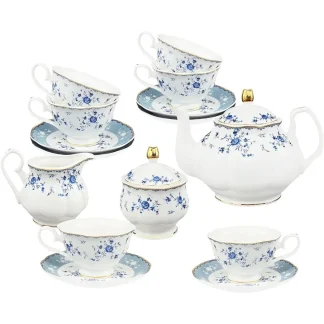
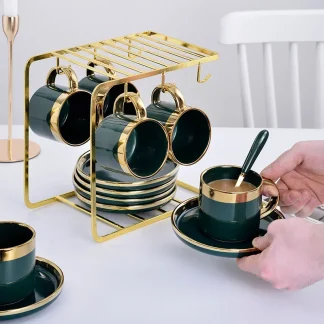
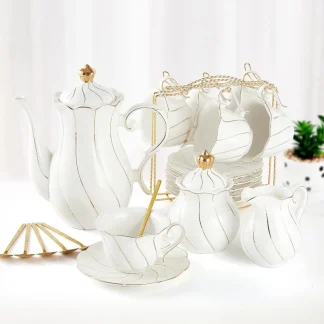
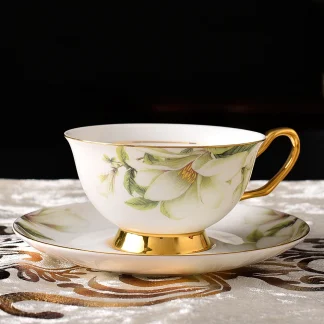 + 3
+ 3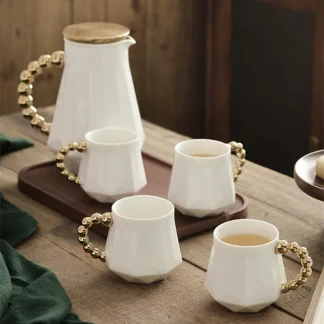
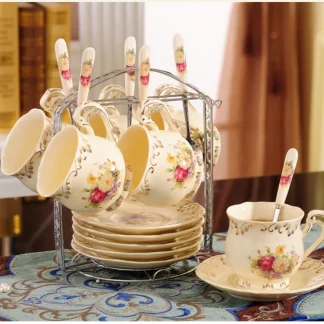 + 5
+ 5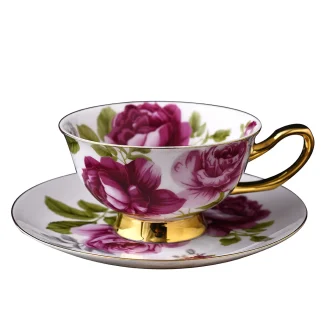 + 4
+ 4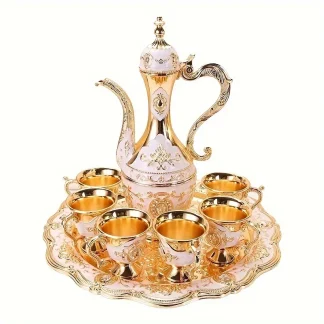
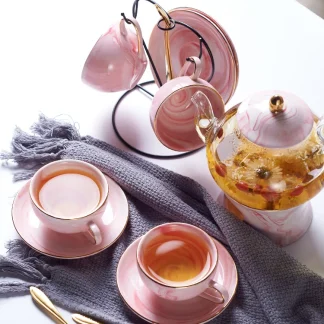 + 9
+ 9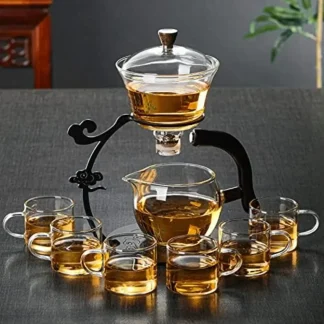
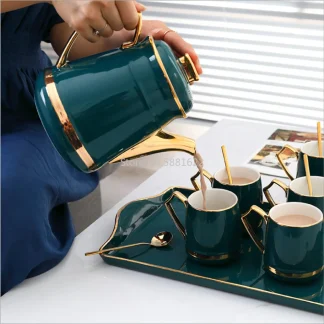
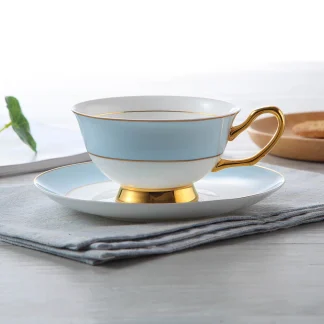 + 16
+ 16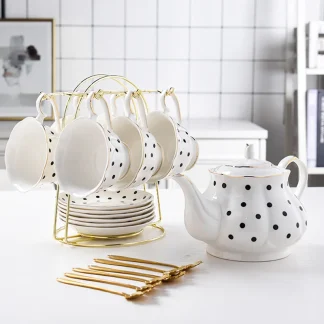 + 1
+ 1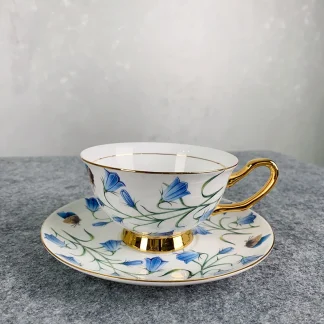 + 4
+ 4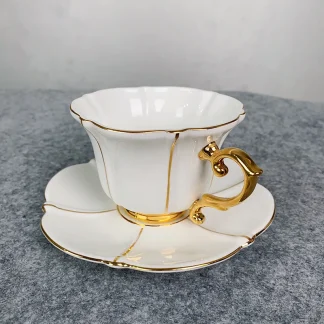 + 16
+ 16